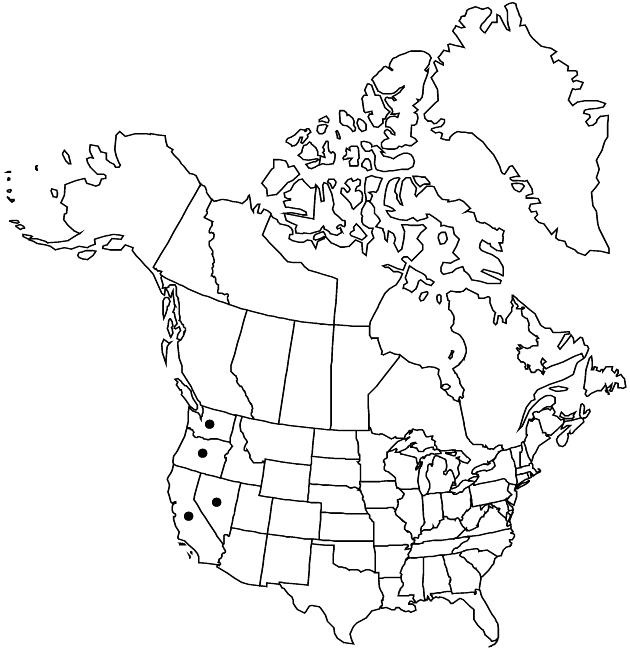Madia citriodora
Bull. Torrey Bot. Club 9: 63. 1882.
Plants 10–70 cm, self-compatible (heads not showy). Stems proximally villous to hirsute, distally glandular-pubescent, glands purple, lateral branches often surpassing main-stems. Leaf-blades linear, 2–9 cm × 1–10 mm. Heads in open, corymbiform arrays. Involucres ± ovoid to hemispheric, 6–8 mm. Phyllaries ± villous or hirsute, glandular-pubescent as well (often sparsely), glands purple, apices usually ± erect, flat. Paleae mostly persistent, mostly connate 1/2+ their lengths. Ray-florets 5–12; corollas greenish yellow, laminae 4–11 mm. Disc-florets 8–50+, functionally staminate; corollas 2–3 mm, pubescent; anthers ± dark purple. Ray cypselae black or brown, sometimes mottled, glossy, ± 3-angled (abaxial sides rounded, adaxial sides 2-faced, angles between those faces ca. 70°), beakless (or nearly so). Disc cypselae 0.2n = 16.
Phenology: Flowering Apr–Jul.
Habitat: Openings in woodlands, forests, and shrublands, disturbed sites, stream banks, often in dry, stony or clayey soils
Elevation: 30–1600 m
Distribution

Calif., Nev., Oreg., Wash.
Discussion
Madia citriodora occurs in northern California, northwestern Nevada, Oregon, and Washington, sometimes with (and often confused with) M. gracilis.
Selected References
None.